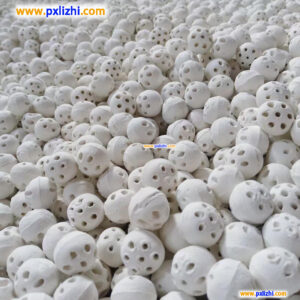
Essential Applications of Inert Ceramic Balls
Inert ceramic balls are indispensable components in numerous industrial processes. These high-purity, non-reactive spheres serve as bed support media, catalyst carriers, and thermal barriers in chemical reactors, refineries, and petrochemical plants. Their exceptional resistance to thermal shock, corrosion, and mechanical wear makes them ideal for maintaining consistent flow distribution and protecting sensitive catalysts in high-temperature environments.
Chemical Resistance and Thermal Stability
Manufactured from premium alumina materials, these balls withstand extreme temperatures up to 1800°C while maintaining structural integrity. Their low porosity prevents contamination, making them perfect for applications requiring ultra-pure processing conditions. Industries leverage these properties for hydrocarbon processing, gas purification, and environmental protection systems.
Key Benefits in Industrial Operations
Implementing inert ceramic ball solutions delivers measurable operational advantages. Facilities report extended catalyst lifespan, reduced pressure drops, and improved process efficiency. The balls’ uniform size distribution ensures optimal void space utilization, enhancing mass transfer while minimizing energy consumption across continuous production cycles.
Cost-Effective Process Optimization
By preventing catalyst bed compaction and channeling, these ceramic spheres reduce maintenance downtime and replacement frequency. Their reusable nature and durability translate to significant long-term savings, particularly in high-throughput operations like steam reforming and ethylene production.
Frequently Asked Questions
What industries use inert ceramic balls?
Primary applications include oil refining, chemical manufacturing, fertilizer production, and environmental engineering for emission control systems.
How do they differ from active catalysts?
Unlike catalysts, inert ceramic balls don’t participate in chemical reactions but provide physical support and thermal management within reaction vessels.
What sizes are available?
Standard diameters range from 3mm to 50mm, with custom specifications available for specialized reactor designs and flow requirements.
Ready to Enhance Your Process Efficiency?
Discover how our engineered ceramic solutions can optimize your industrial operations. Contact our technical specialists today for personalized recommendations and material selection guidance tailored to your specific process parameters.

